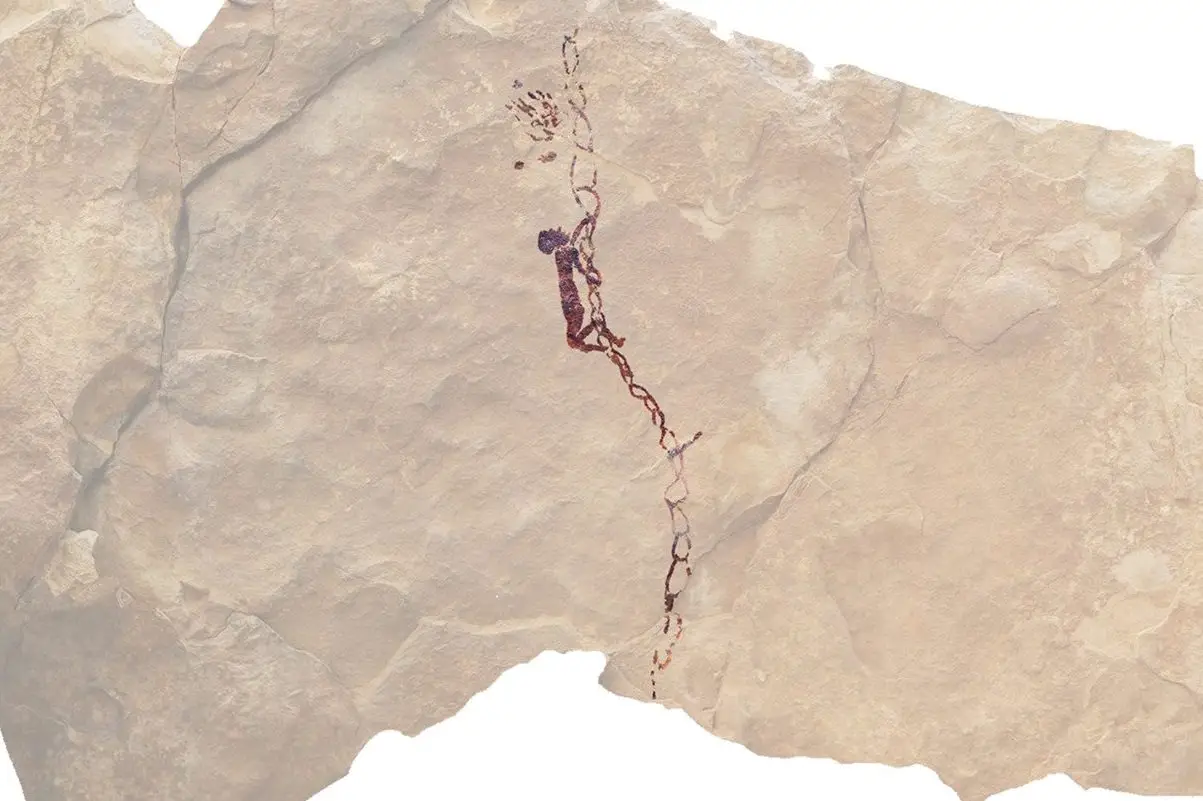According to a study published in the Cambridge Archaeological Journal, Spanish Levantine rock art provides distinctive visual evidence that indicates how societies in Eastern Spain had developed expertise in climbing and the use of specialised equipment to minimize risks associated with the activity.
A recently uncovered depiction at the Barranco Gómez site in Teruel reveals the most intricate use of ropes discovered thus far in Spanish Levantine art. This study delves into the representations found within this scene, particularly focusing on the use of a rope ladder to access a beehive. By examining these depictions, the research aims to gain deeper understanding of the various uses and technological advancements related to rope-based activities.
Thorough examination of the existing depictions found in Albacete, Castelló, Huesca, Teruel, and Valencia does not provide clear insights into the specific techniques employed for rope production, such as whether twisted or braided fibres were used.
However, the length of the ropes depicted indicate that the societies of Spanish Levantine were technologically proficient in crafting high-quality ropes. Moreover, their refined technique suggests that their expertise in producing long ropes was specifically tailored for climbing activities.
Among the studied depictions, collecting honey emerges as the sole clearly identifiable activity. The production of a rope measuring approximately 25 meters in length would have demanded significant time and effort, encompassing the gathering of raw materials and the actual crafting process. The considerable risk involved in climbing to such heights using rudimentary rope ladders underscores the paramount importance of honey and wax collection to these societal groups.
Bee-related products held significant importance in prehistoric times, serving various economic, technological, and cultural purposes such as sustenance due to their high calorific value and tool production. The depicted scenes portray an array of climbing systems, which researchers have categorised into two groups based on their size, shape, and flexibility: rigid ladders or masts, and flexible systems, likely associated with the usage of different raw materials.
Although Spanish Levantine rock art is dispersed across a wide geographical area, the depictions of climbing systems (ropes and ladders) are concentrated in two distinct regions: the Maestrazgo in the northern regions of Castelló and Teruel, and the Caroig Massif in the southern region of Alicante. This observation leads the research team to infer that these depictions may signify specific behaviors, territorial codes, or possess symbolic significance.
While many of the scenes examined in this study are familiar, the comprehensive investigation of ropes and their associated technology had not been previously undertaken. The materials used for rope production and the techniques employed to create them are largely imperceptible in archaeological records, making it challenging to trace their origins over time.
By analysing descriptions from other researchers and conducting on-site research, the team has gathered valuable evidence regarding the structure, usage, and manufacturing of these ropes. This study also highlights the rock art’s capacity to depict fleeting practices and the utilisation of perishable materials.
Spanish Levantine rock art stands as a remarkable artistic phenomenon unique to the eastern region of the Iberian Peninsula, emerging after the Paleolithic era. With over a thousand recorded sites, it has been designated as a World Heritage Site since 1998. This art form offers an extraordinary depiction of human life during a pivotal stage of its development. Characterised by its naturalistic style and rich narrative elements, it portrays dynamic scenarios encompassing hunting, warfare, social activities, gatherings, and more, providing an invaluable glimpse into the past.
Header Image Credit : Manuel Bea, Dídac Roman & Inés Domingo





